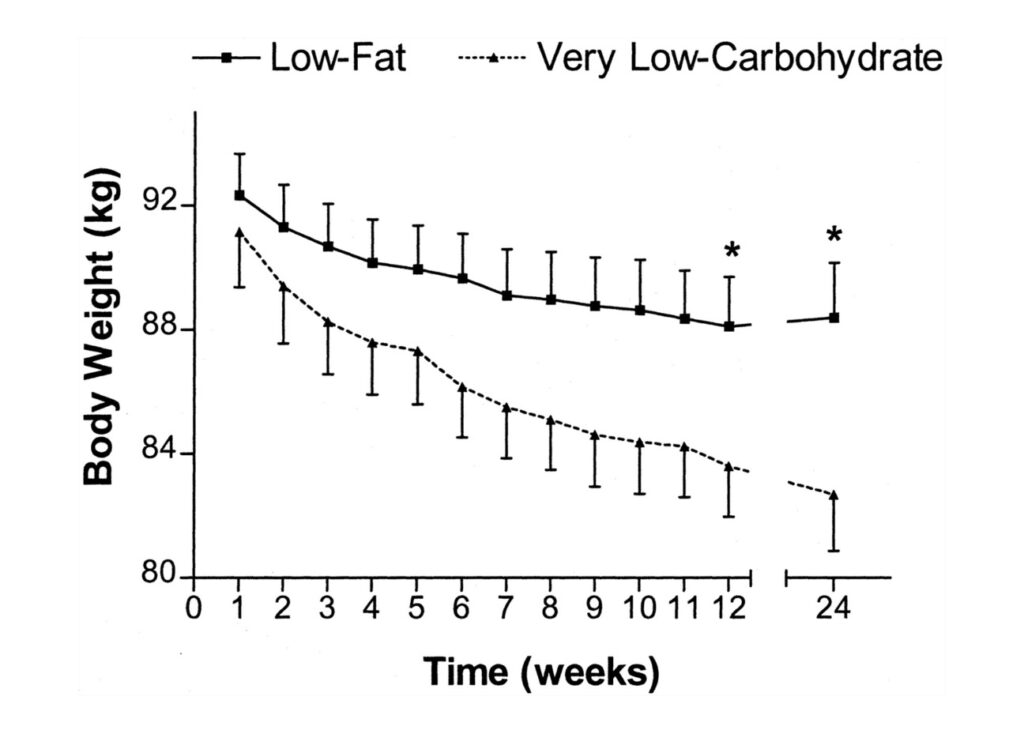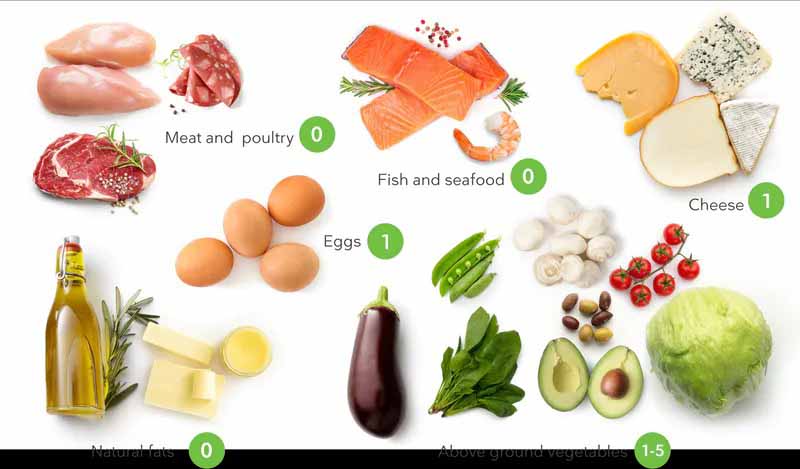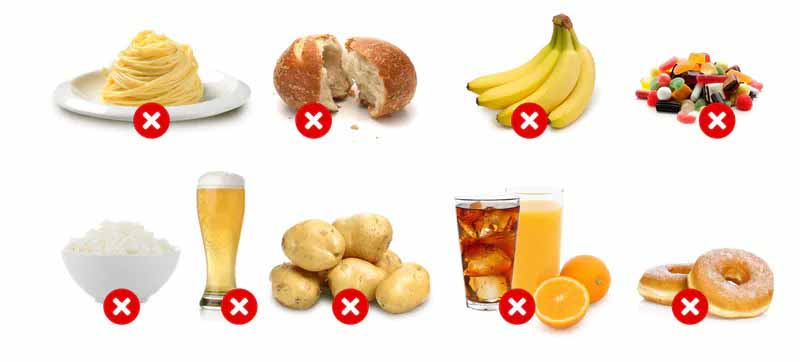Despite continuous advances in medicine, obesity remains a major health hazard worldwide. The majority of chronic diseases like diabetes, hypertension, and heart disease are largely related to obesity which is usually a product of an unhealthy lifestyle and poor dietary habits. Appropriately tailored diet regimens for weight reduction can help manage the obesity epidemic to some extent. Looking for a new diet to kickstart serious weight loss? The ketogenic diet is probably on your list of eating plans to consider, one diet regimen that has proven to be very effective for weight loss.
What is a keto diet and how does it work?
The ketogenic diet, or keto for short, is a term for a low-carb diet. The idea is for you to get more calories from protein and fat and less from carbohydrates.
For many Americans, carbs like bread, pasta, or potatoes make up more than 50% of their daily diet. Your body breaks down the glucose (sugars) found in carbs to fuel your body with energy. The goal of the ketogenic diet is to enter a state of ketosis through fat metabolism. In a ketogenic state, the body uses primarily fat for energy instead of carbohydrates, with low levels of carbohydrates, fats can be converted into ketones to fuel the body.
Why does the Keto diet restrict carbs?
Carbs are the main source of energy for our body. Without enough carbs for energy, the body breaks down fat into ketones. The ketones then become the primary source of fuel for the body. Ketones provide energy for the heart, kidneys and other muscles. The body also uses ketones as an alternative energy source for the brain. Therefore, your liver actually burns fat to make ketones. Ketones are used for energy in lieu of carbs. As your body steadily burns fat as a fuel source, you will start to lose weight.
In a typical keto diet, your nutrition centers on fatty foods. They’ll make up anywhere from 60% to 80% of your daily calories. Proteins make up 15% to 20%. Carbs are restricted to no more than 50 grams. Studies show that those who follow very low-carb ketogenic diets (VLCKD) are more likely to lose weight than they would if they followed a low-fat diet.

In fact, a group of researchers from Cambridge University reviewed 13 randomized controlled trials comparing very-low-carb ketogenic diets (VLCKD) to low-fat (LF) diets and found that individuals following VLCKD can achieve greater weight loss than those following LF diets, and better yet, keep the weight off long term. But because the keto diet calls for drastic changes in your daily diet, it’s best to ask your doctor or a nutritionist if it’s right for you before you get started.
Should you try the keto diet?
Here are a few reasons why you might think about doing the keto diet:
- Type 2 diabetes: One study found that being on the keto diet for one year reversed diabetes for up to 60% of participants. With an average weight loss of 30 pounds, they dramatically reduced or eliminated their need for insulin and no longer needed oral hypoglycemic drugs. The keto diet is also easier to sustain than the calorie-restricted diet or the protein-sparing modified fast.
- Morbid obesity: If your body mass index is over 40 — or if you have insulin resistance without type 2 diabetes — the keto diet can be very helpful as well. It can be used as a short-term strategy to reset your metabolism; you don’t have to be on it forever.
Clearly, the ketogenic diet is the standard of care for treatment-resistant epilepsy. But we’re also seeing its benefits in other neurological conditions. Research suggests the keto diet can bring improvements for those with Alzheimer’s disease; autism; or brain cancers such as glioblastoma.
So the keto diet can be a powerful intervention. People with type 2 diabetes and or/morbid obesity can do phenomenally well on it. (And the truth is, this describes many Americans; one in two of us are now are either prediabetic or type 2 diabetic, and 70% of us are overweight.)
But it’s vital to work with a doctor or health professional who can treat and follow you while you’re on the keto diet.
Who should not do the keto diet?
No single diet is suitable for everyone, especially since individual metabolism, genes, body types, lifestyles, taste buds, and personal preferences differ.
It can benefit people with obesity or who have a higher chance of developing metabolic syndrome, but it’s not suitable for everyone. For example, it’s not suitable for people with the following conditions:
- pancreatitis
- liver failure
- disorders of fat metabolism
- carnitine deficiency
- porphyrias
- pyruvate kinase deficiency
There may also be some negative effects. When you first start the diet, you may experience flu-like symptoms, known as “keto flu.” This may include poor energy and mental function, increased hunger, sleep issues, nausea, digestive discomfort, and poor exercise performance.
There’s also a risk of dehydration, so you need to drink plenty of fluids, especially water while following this diet.
Always speak to a doctor before starting a ketogenic diet to ensure that it’s safe and suitable for you.
What to eat on a keto diet?
One of the most common questions is, “What to eat on a keto diet?” or “What to eat on a low-carb diet?” Fortunately, with the right resources, this is one of the easiest questions to answer.
In fact, the keto diet plan is probably the most flexible, sustainable eating lifestyle out there. You don’t have to feel deprived, bored or restricted. And, it doesn’t need to be complicated.
The best foods for a keto diet
This simple list summarizes what to eat on a low-carb diet. And, what to eat on a keto diet is basically the same:
- Healthy fats – like avocado oil, olive oil, butter, and coconut oil.
- Leafy greens – like lettuce, spinach, and kale.
- Non-starchy vegetables – that grow above ground, like zucchini, cauliflower, peppers, broccoli, asparagus, celery, and many others. Some vegetables that grow below ground, such as onions, are also okay.
- Meat – like beef, pork, and lamb.
- Poultry – like chicken, turkey, and duck.
- Seafood – like salmon and other fish, shrimp, crab, and lobster.
- Full-fat dairy – like cheese, cream cheese, and heavy cream.
- Eggs
- Sugar-free beverages – like water, coffee and tea.
- Herbs & spices – like basil, dill and cinnamon.
- Low carb condiments – like mayonnaise, hot sauce and mustard.

You can also enjoy these on a low carb keto diet in moderation:
- Low carb fruit – like avocados (the fruit exception that doesn’t need to be in moderation), berries (all kinds!), and coconuts.
- Nuts & seeds – like almonds, macadamia nuts, walnuts, chia seeds, and sunflower seeds.
- Sugar-free sweeteners – like allulose, erythritol, monk fruit and stevia. Start with this keto sweetener – it’s natural, acts like sugar, and has the best taste of them all.
- Low carb flours – like almond flour, coconut flour, and psyllium husk powder.
The main difference between low carb and keto is the macronutrient profile, but the types of foods you eat are mostly the same.
These are the keto diet basics, and it’s best to start simple — meat, eggs, fats, and veggies primarily. Once you have it down, you can experiment with extras like low-carb keto desserts or more advanced recipes, but it’s not necessary.
Foods to avoid on a low carb diet
Avoiding carbohydrates is probably the biggest adjustment for people starting a keto diet or low-carb diet. Many of us were used to consuming carbs at every meal. Below is a list of foods to avoid:
- Grains – including wheat, bread, pasta, rice, oats, cereal, corn, etc.
- Sugar – including table sugar, candy, pastries, cakes, ice cream, chocolate, soda, juice, honey, maple syrup, etc.
- Starchy vegetables – including potatoes, sweet potatoes, parsnips, etc.
- Legumes – including beans, lentils, chickpeas, etc. (Peanuts are an exception in moderation.)
- High-sugar fruits – including bananas, pineapple, oranges, apples, grapes, etc.
- Low-fat dairy & milk – including all cow’s milk (except heavy cream is fine), low-fat cheese, etc.
- Seed & vegetable oils – especially margarine, canola oil, corn oil, grapeseed oil and soybean oil
- Processed “low carb” foods – this depends on ingredients, so read labels for hidden sugar, starch, and artificial ingredients

Get these out of your house if you can! If you have family members that are not on board, at least store these in a separate area from other foods to reduce temptation.
Also, always check labels for any food that has one. Avoid anything that has added sugar or starch as an ingredient, watching for different names like dextrose, maltodextrin, maple syrup, honey, corn syrup, cornstarch, potato flakes, etc. Sometimes you’ll be surprised where you might find added sugars.
3 Common Mistakes to Keep In Mind When On a Keto Diet
- Use Fat Wisely Rather Than Excessively. While the keto diet means your food choices are geared to a low carb/high fat intake, it does not mean adding fat to everything you eat. You do not need to fall for one of the most trendy keto tricks— adding a pat of butter to your coffee. This might be useful at the very beginning as you transition away from a high-carb diet but should not be continued once you are past the initial shift once your body has adapted to this new eating rhythm. Instead, listen to your body for cues. If you are feeling hungry right after a meal, you probably didn’t have enough protein or fat. When followed correctly, a keto-based meal will leave you feeling full and satiated for hours.
- Seek Nutritional Ketosis, Not Higher Ketone Levels. To gain the most benefit from this diet, you’ll want to aim for a level of ketosis between 1.5-3.0 mol/L on a blood ketone meter. You’ll be there when you are eating well-designed meals that carry you through to the next meal without hunger or other adverse symptoms (ie, nausea, insomnia, crankiness, inability to exercise). Higher ketone levels suggest you have more circulating ketones in your blood but don’t confuse this with efficient fat burning, which is the goal of this diet.
- Ketosis Isn’t Forever. It’s recommended that you follow this diet to arrive at a state in which your body adapts to burning fat and glucose stores for fuel. Then you’ll want to take an occasional ketosis holiday, adding a serving of unprocessed, whole grains to allow your body to chance to work less hard. Staying in ketosis long-term—without breaks— can cause muscle aches, nausea, and fatigue.
Adhering to the keto diet puts your body into a state of ketosis, which sounds similar to ketoacidosis. However, don’t confuse these terms as ketosis and ketoacidosis are two very different physiological states.
How to reduce the side efforts of the ketogenic diet
The most common side effects for people undergoing the keto diet are headaches, tiredness, muscle fatigue, cramping, constipation and heart palpitations.
Often these symptoms are mild and short-lived for most people. As they’re just your body adjusting to burning a new energy source: fat. Nevertheless, there are things you can do to help deal with said side effects.
- Cramps: specifically leg cramps, are a result of keto being a diuretic (promoting water and salt loss). Therefore it’s essential to make sure you drink plenty of water and up your sodium intake – sprinkle a little salt on everything!
- Constipation: Seek out natural constipation remedies like drinking water and ensuring you eat vegetables that contain good quality fiber.
- Breath: “Some people may also experience bad breath,” nutritionist Flo tells us. So be sure you’re brushing frequently and have mints to hand after meals.
Nutritionist and PT Flo put some of these side effects down to the change in carbohydrate consumption too:
“A sudden and drastic reduction in carbohydrates can initially cause some side effects; from nausea and vomiting to flu-like symptoms in the first few weeks,” she tells us. “These generally improve after the initial period and one way of minimizing these side effects would be to reduce carbohydrate intake over time rather than all at once.”
If you experience side effects like heart palpitations, stop your diet immediately and seek medical help. No diet is ever worth risking your life for.
Frequently asked questions
Here are answers to some of the most common questions about the ketogenic diet.
Q: Is it safe to do the keto diet?
For certain people, keto can pose health risks, so talk to your healthcare team first. Some groups that may want to avoid keto are anyone with an underlying health condition like diabetes, pregnant or breastfeeding women, those who don’t have a gallbladder, anyone with a history of an eating disorder, and anyone taking prescription medication.
Q: How do I get started on keto?
Your best chance for success on such a restrictive diet as keto is to find a registered dietitian familiar with the eating style. He or she will help you gradually change your diet so you’re eating fewer carbs and more fat, staying hydrated, managing any keto side effects that come up, and meeting all your nutritional needs.
Q: Does it really work for weight loss?
Yes. But that answer comes with a qualifier. It takes two to three weeks on the diet to start fat burning (ketosis) in the body. So, don’t expect instant results. Some studies have shown that adhering to low- or very-low-carbohydrate ketogenic diets help people lose weight. However, long term there is little difference between a ketogenic diet and a higher carbohydrate diet.
Q: Will I lose muscle mass?
There is some risk of losing muscle mass in any diet. However, high protein intake and ketone levels can minimize muscle loss, particularly if you strength train.
Q: How much protein can I eat?
Protein should be moderate, as a very high intake can spike insulin levels and lower ketones. Around 35% of total calorie intake is probably the upper limit.
Q: What if I am constantly tired, weak, or fatigued?
You may not be in full ketosis or be utilizing fats and ketones efficiently. To counter this, lower your carb intake and revisit the points above. A supplement like MCT oil or ketones may also help.
Q: Can I ever eat carbs again?
Yes. However, it’s important to significantly reduce your carb intake initially. After the first 2 to 3 months, you can eat carbs on special occasions — just return to the diet immediately after.
Q: My urine smells fruity. Why is this?
Don’t be alarmed. This is simply due to the excretion of by-products created during ketosis.
Q: My breath smells. What can I do?
This is a common side effect. Try drinking naturally flavored water or chewing sugar-free gum.
Q: I heard ketosis was extremely dangerous. Is this true?
People often confuse ketosis with ketoacidosis. Ketoacidosis is dangerous, but ketosis on a ketogenic diet is usually fine for healthy people. Speak to your doctor before starting any new diet.
Q: How long does it take to enter ketosis?
It usually takes about 3 days after starting a ketogenic diet to enter ketosis. However, it takes 3-4 weeks before you are “fat adapted” and burn fat efficiently. This is because the body takes a few days to burn through all the glycogen in your liver (your body stores extra glucose there and this gets depleted before you start producing ketones), and afterward, it takes some time for your body to adjust to using primarily fat for fuel.




